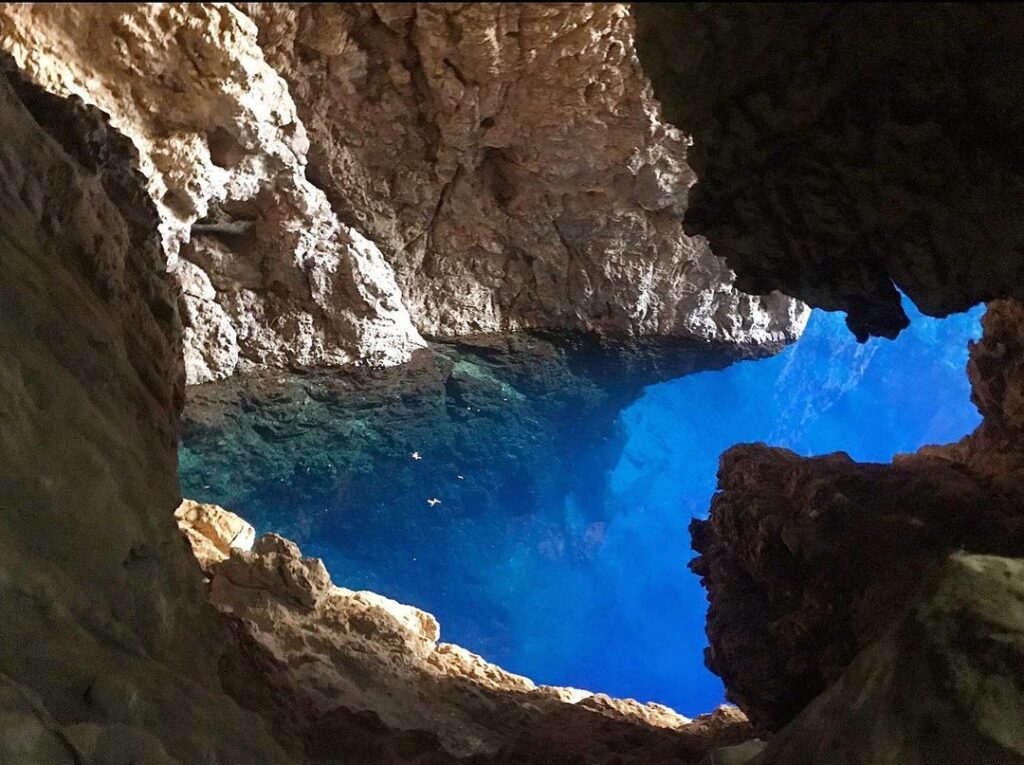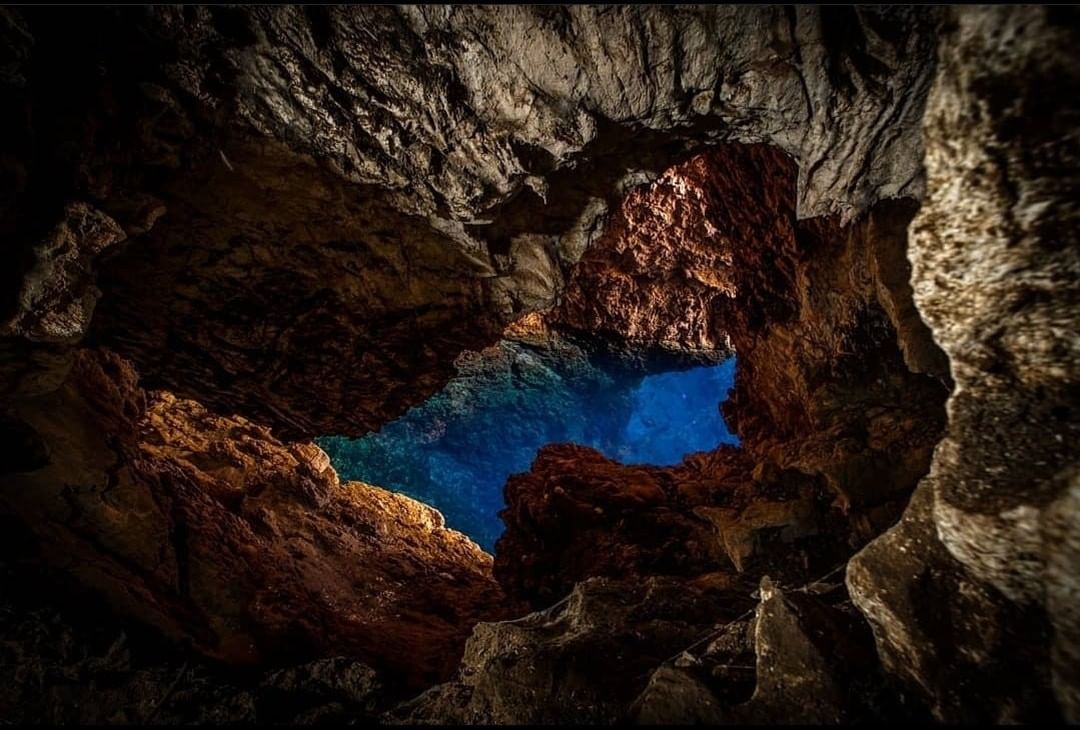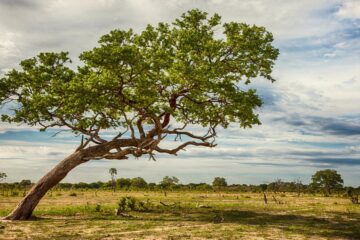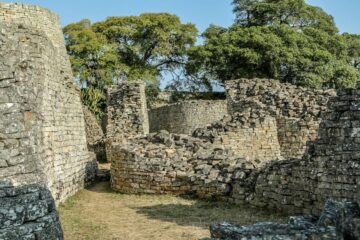Chinhoyi caves, previously known as Sinoia Caves, have been a favorite destination for travelers on route to Kariba, campers, and picnicking day-trippers from Harare.
Frederick Courtney Selous found the limestone caverns in 1887, which he subsequently documented in his works in 1888. The caverns’ history predates this historical period, and excavations in and around the caves have indicated the presence of humans dating back to very early periods.
Carbon-dated pottery and human bones found in the vicinity are thought to date back to AD 650. These caverns represent the most largest cave system accessible to the general public in Zimbabwe.
The caverns were declared a National Park in 1955, then a Recreational Park in 1975, and are now administered by ZIMPARKS (Zimbabwe Parks & Wildlife Management Authority).
The caverns are situated in Makonde District, Mashonaland West, Zimbabwe’s middle and northern region. They are located around 9 kilometers (5.6 miles) northwest of Chinhoyi, the closest big town and the site of the district and province offices.
The National Parks Authority operates a campground, and Caves Motel, a peaceful, private institution, is on-site. Three ablution complexes with hot and cold water, tubs, toilets, and bathrooms serve the picnic and camping areas.
Why visit Chinhoyi caves?

- A fascinating subterranean realm produced by water drips.
- The mystical sleeping pool, a deep cobalt blue created by limestone flecks in the water, is claimed to house an undersea monster.
- On the road to Chirundu or Lake Kariba, the location is conveniently accessible.
How to get to Chinhoyi caves?
Chinhoyi is located 115 kilometers from Harare. Proceed on the A1 towards Chirundu, 7.36 kilometers, past the turnoff on the left towards Alaska mine, 7.65 kilometers, and turn right into Chinhoyi Caves.
History of the Chinhoyi caves
Locals call the caves Chirorodziwa, which translates as “Pool of the Fallen.” Local people claim that the caverns were used as a hideout by a robber named Nyamakwere, who killed numerous victims by dumping them into the Silent Pool. Chinhoyi, the native Mashona Chief, finally defeated and murdered Nyamakwere.
During the Ndebele raids, when Mzilikazi sent his military units north and east in seek of cattle, and fairly late in the days of Lobengula, even kraals built on hills were not secure from these enemies, so Chief Chinhoyi descended from the top of a hill with his citizens and built his kraal close to the entrance to Chirorodziwa. When the Ndebele were discovered in the area by Chinhoyi’s scouts, the chief assembled his people and led them straight into the cave. Down in the cavern, approximately 300 people listened for the Ndebele, drank from the quiet pool, but never swam in it for fear of the monster lurking in its depths. Chinhoyi’s inhabitants resumed their usual lives when the Ndebele invaders left.
The legendary European hunter Frederick Courtenay Selous is said to have been the first European to see the cavern on a hunting expedition in 1887. Following the European takeover of Zimbabwe, Chief Chinhoyi is claimed to have sought safety in the big cave in 1896, before moving on to Lomagundi.
Chinhoyi cavern is technically a round sink hole in the adjacent dolomite that has resulted in a funnel-shaped depression in the limestone caused by water action on the soluble crystalline rock. Flash floods and depressions in the surrounding region reveal the falls of previous tunnels and caves. Dolomite deposits seem to have been formed several millions of years ago in a shallow marine environment. Stromatolites are the oldest types of organisms in Zimbabwe, and they are traces of algae discovered as fossils inside the dolomites. Rain water disappears into the rock as it trickles downwards, absorbing carbon-dioxide from plant root respiration and bacterial degradation of humus, and the slightly acidic solution melts the calcium carbonate in the dolomite, generating the unique subterranean caves.
The sleeping pool in Chinhoyi caves
There are two ways to get to the sleeping Pool:
- Along the entrance gate, through a protracted, gloomy, sloped passageway where the water’s vista has been likened to Capri’s renowned Blue Grotto. Light penetrates the tube from both ends, and two tiny ceiling shafts ventilate and illuminate the slanted passageway. On one side of the path is a big room that has been inhabited at various points during the cave’s history. Wild animals have descended this tunnel for decades to drink at the pool, and the stones of limestone have been worn smooth by the continual rubbing past of thirsty creatures. The floor was rough and uneven in places, but it has been cleaned up in recent times.
- In through dark cavern and via a tight path, this goes to a place slightly above the water on the other side of the Sleeping Pool. Visitors who are less nimble are recommended to avoid this approach.
About the sleeping pool
The cobalt-blue color is caused by scattered lime particles in the crystal pure water. The pool is about rectangle in form, with massive stalactites protruding from its bottom. For a lot longer, it was assumed that the pool had no bottom, but divers from the Zimbabwe Sub-Aqua Speleological Research Group discovered that the depth of the water ranges between 80 and 90 meters. This variation in depth is caused by the quantity of rainfall received during a given season. Numerous under water channels going from the sleeping pool have been discovered, although all of those studied so far go back into the pool.
The blind cave is a tiny cavern approachable exclusively to divers towards the end of the dark cavern. A second channel, 58 metres below the surface, links with the sleeping pool, and a third has yet to be completely investigated. It is likely that a vast network of subterranean tubes and caves will honeycomb the host dolomite rocks. According to studies, the water in the cavern is linked to a larger body of water since the temperature in the sleeping pool never changes from 220 degrees Celsius.
There are fish in the pond, and water-lilies bloom on its edges from time to time. Myriads of little black tadpoles thrash back and forth under the lily pads in quest of food.







